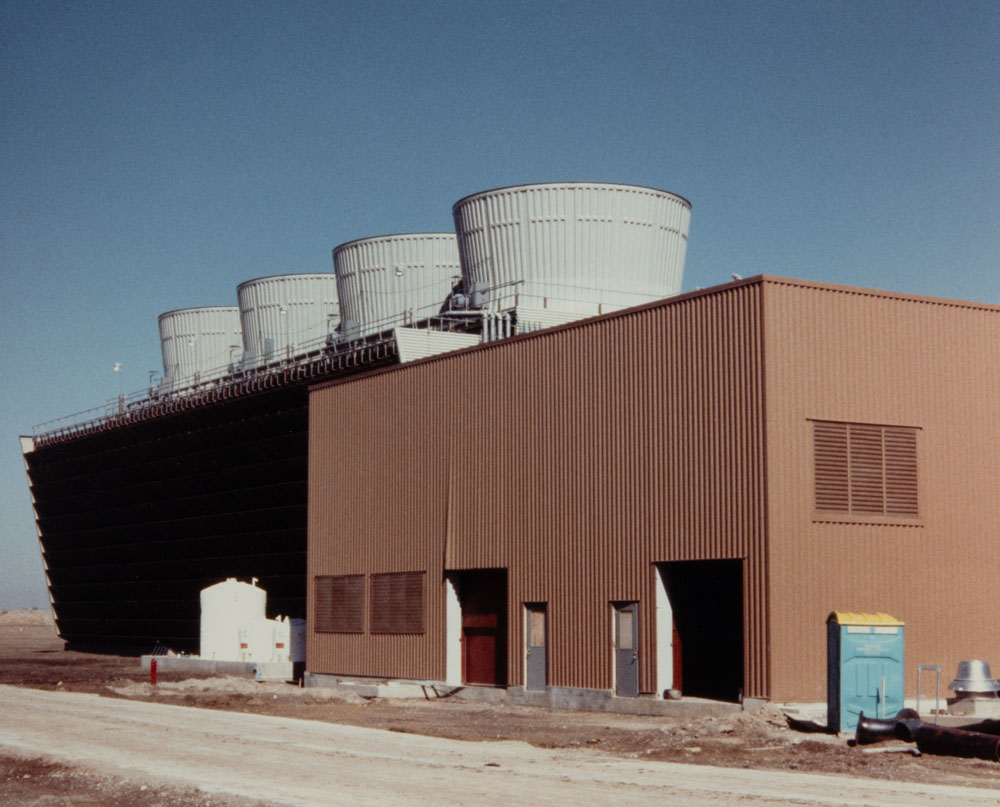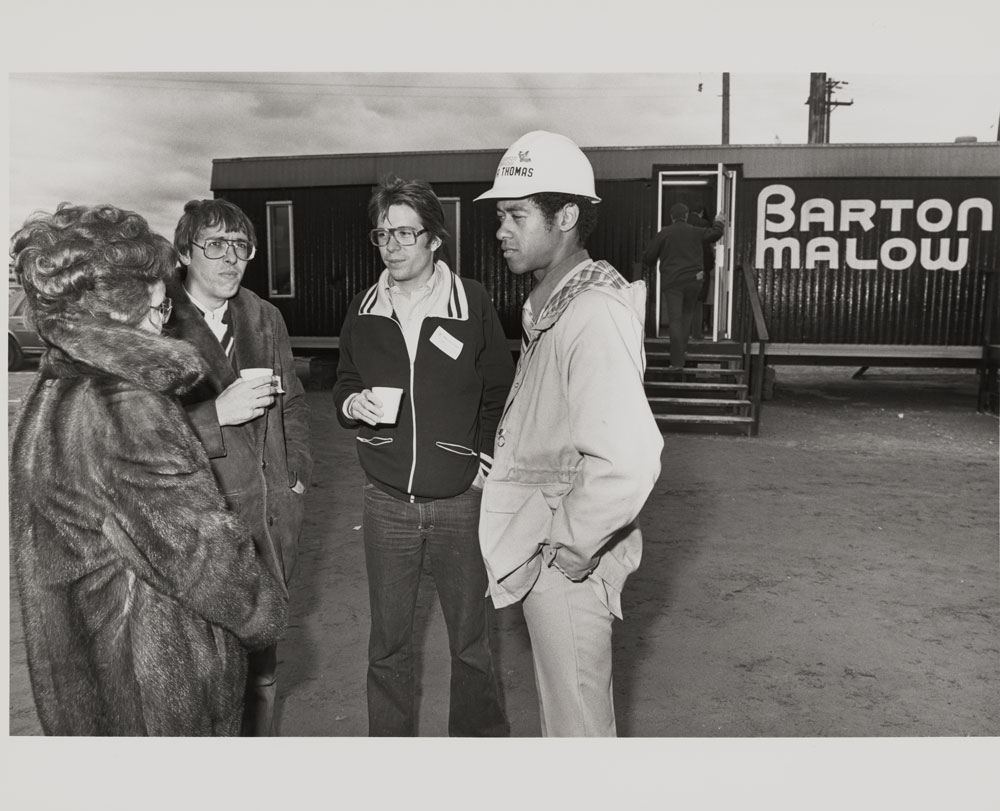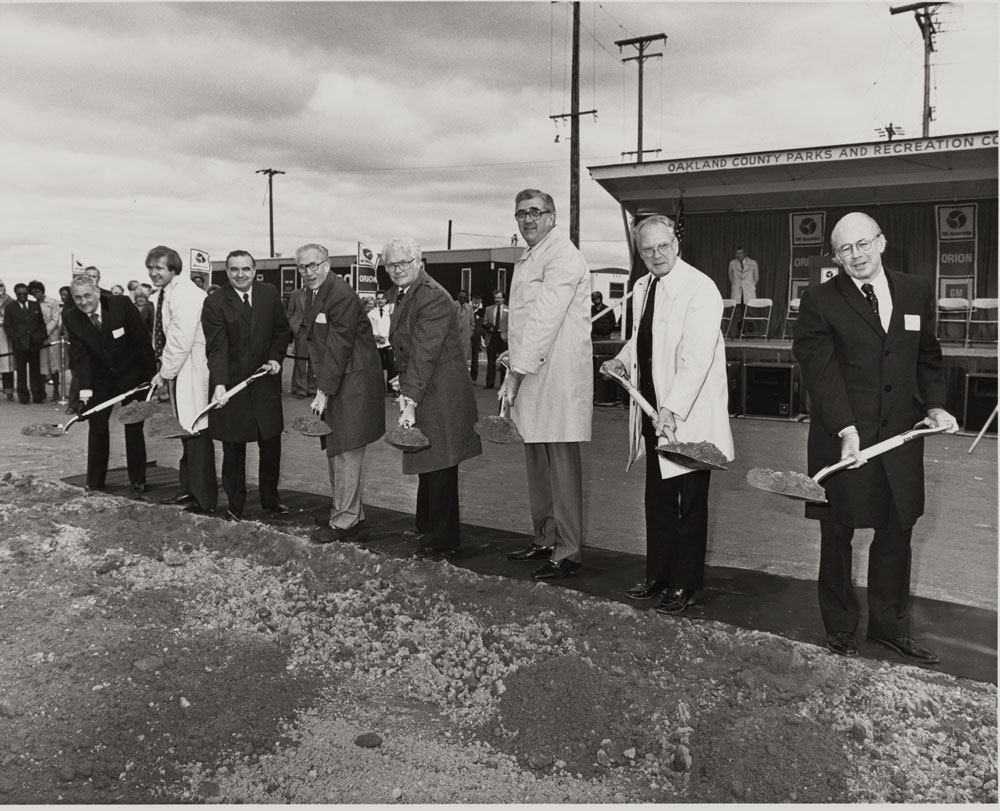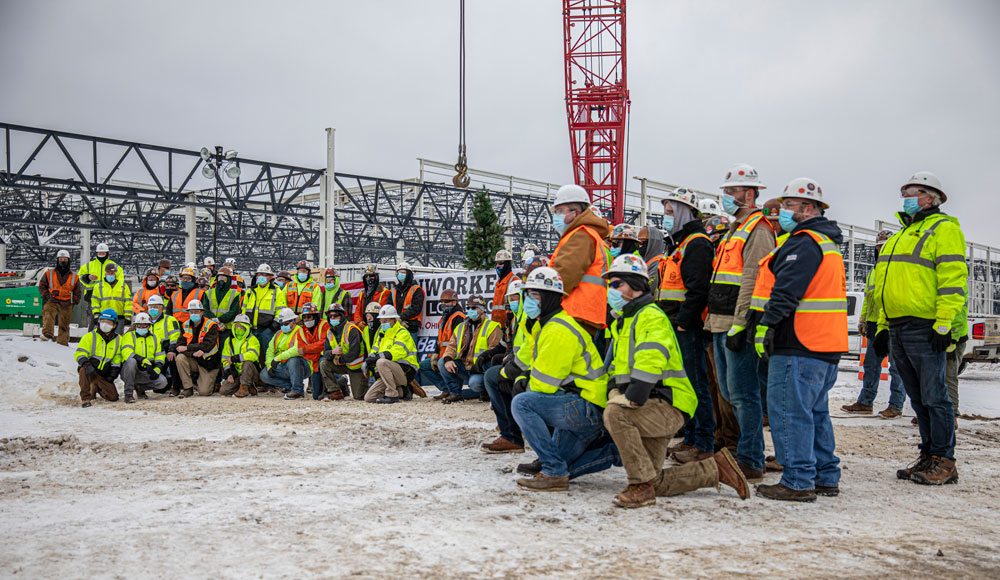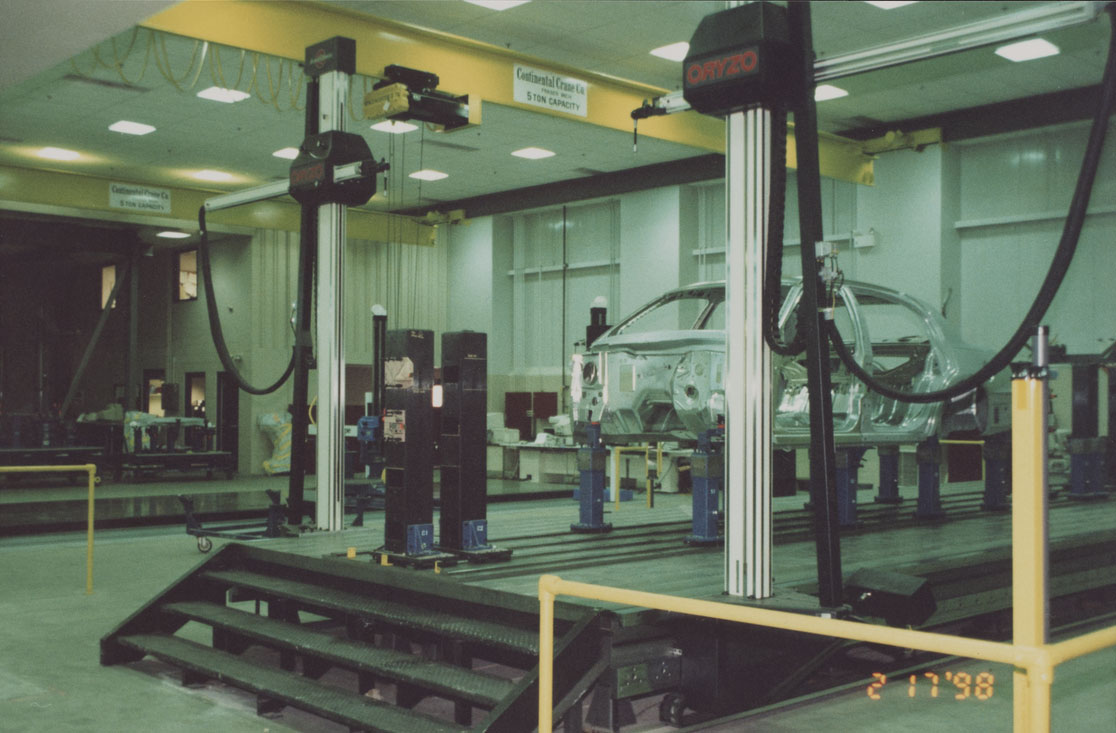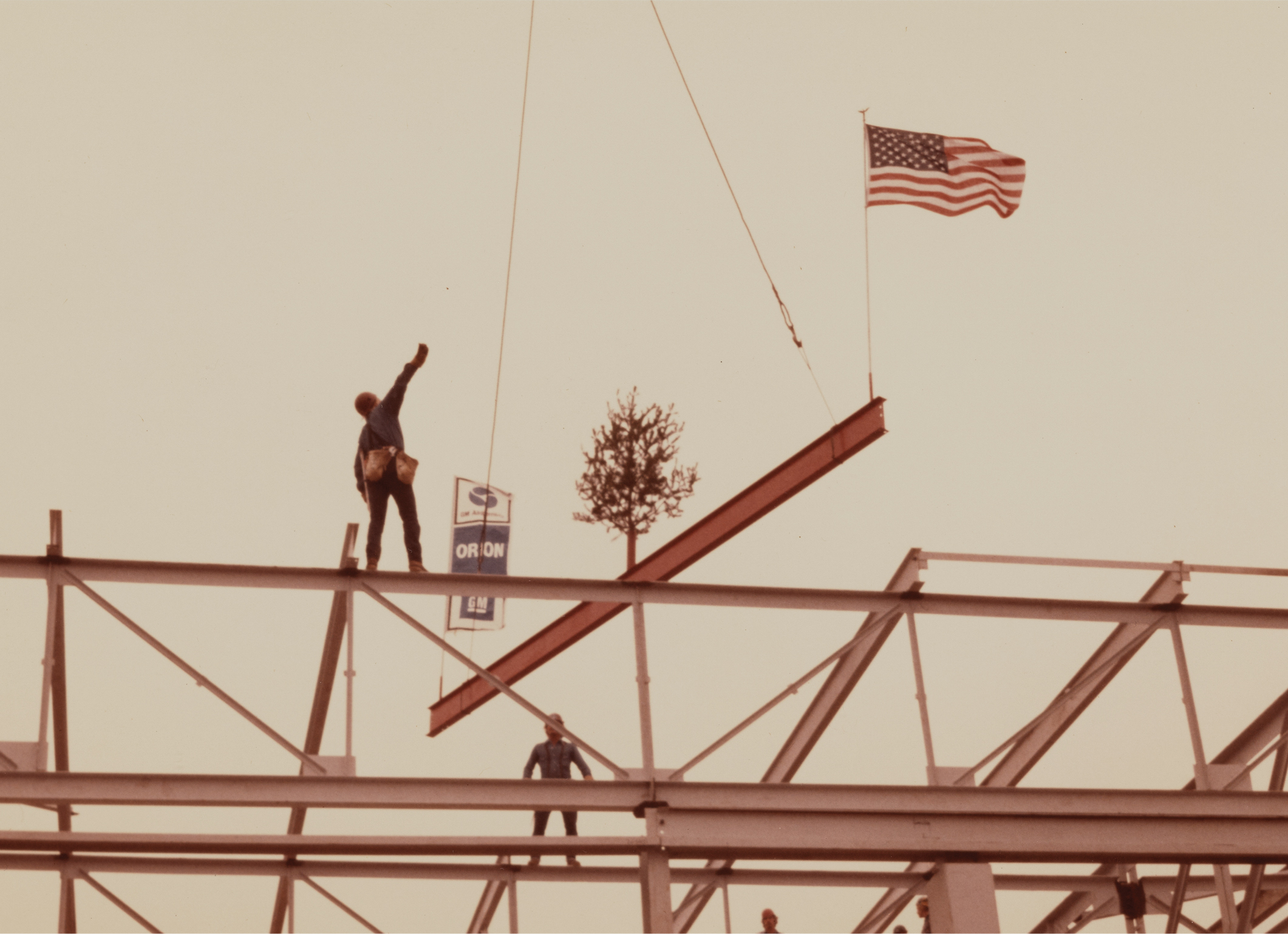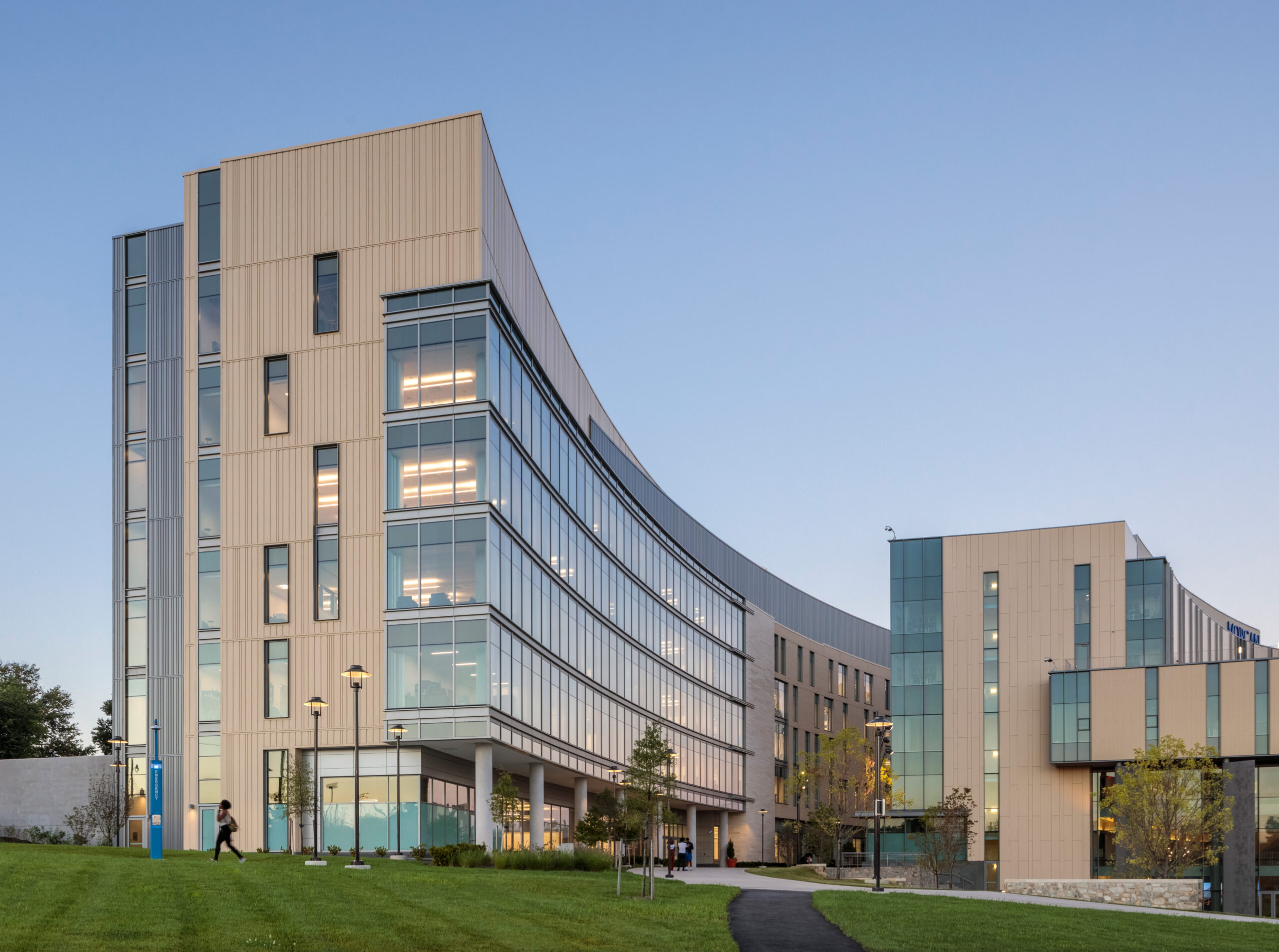Building, Growing, and Transforming with the American Auto Industry
Projects
From the beginning, Barton Malow has been the builder of choice for automakers who put the world on wheels Some brands are long forgotten — Hudson Motors, Studebaker, and Packard — but others, such as Ford, Chrysler (now Stellantis), and General Motors, define the best of the American automobile industry. And as the industry has grown and evolved, so has Barton Malow.
During the first two years of operation as C.O. Barton, about half of the company’s business was related to the automobile industry, with a big portion coming from the Hudson Motor Car Company doing alterations and repairs. As Detroit earned its “Motor City” moniker in the years and decades that followed, it continued to emerge as an important global industrial center, and Barton Malow’s automotive portfolio fittingly increased.
“As Detroit was growing and expanding with this new thing of mobility in the early 1900s, people moved to Detroit,” explains Barton Malow President + CEO Ryan Maibach. “And with this population increase came a demand for new education, healthcare, and municipal facilities to support those in the auto industry.”
Former CEO and current Chief Community Officer Ben Maibach III recognizes the company’s reciprocal relationship with the auto industry.
“And you look at, even today, how important and what a significant part of our business that automotive sector is,” he says. “That core has been part of who we are and what made us who we are today.”
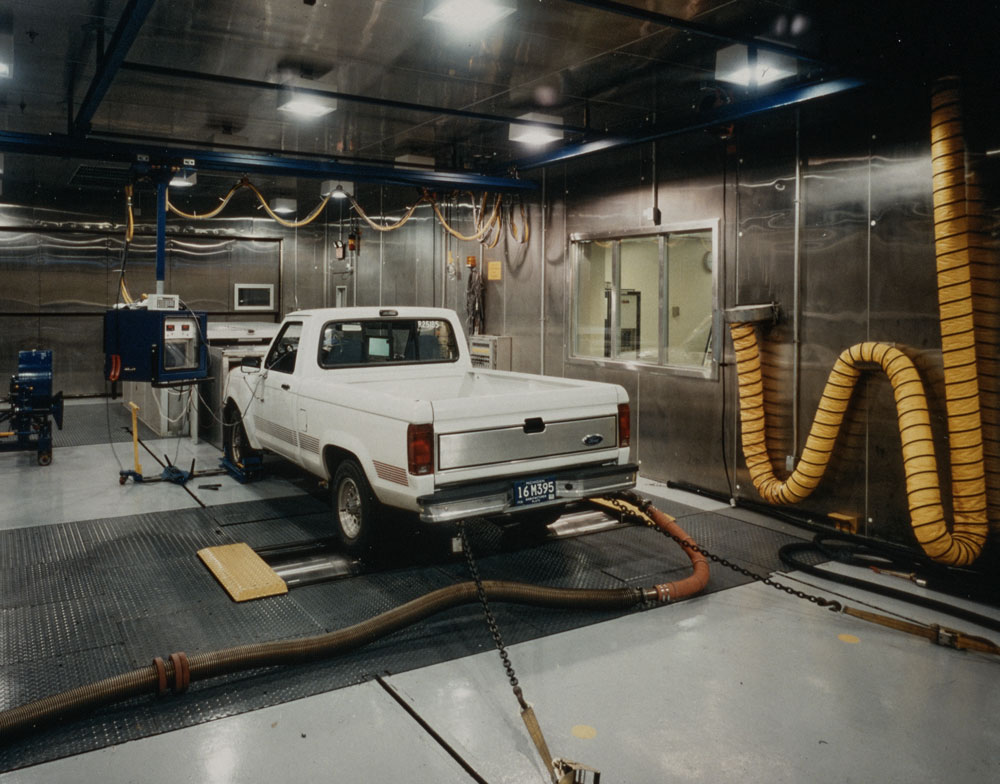
Inside the Ford Test Lab in Allen Park, Michigan (early 1990s). Barton Malow earned this job in 1990, opening the door for further work with the automaker.
Driving Growth with General Motors
Though Barton Malow performed minor work for General Motors (GM) as a subcontractor in the early days of the company, we earned our first big project with GM in 1953, initially performing maintenance work on plants in and around Detroit.
Since then, the General Motors partnership has led to massive projects, opportunity, and exponential growth for Barton Malow not just in the Motor City, but throughout North America.
“From the start, GM has probably been one of the most loyal, continuous customers that we’ve had,” says former Barton Malow Chairman of the Board Doug Maibach.
The 1980s marked an explosive decade of growth with projects ranging from the General Motors Assembly Division World Headquarters to a trio of 3.2 million-SF complexes in Orion Township and Hamtramck in Michigan and in Wentzville, Missouri.

The “Mega Slab” concrete pour at GM’s Arlington, Texas, facility covered more than 256,000 square feet at a depth of 8 inches. Part of the M5 Productivity Improvement Program, the pour was the largest continuous concrete pour to date in January 2018.
Ben Maibach III remembers being called to GM in February 1981 and told it liked Barton Malow’s proposals on two of the plants. ”How would you handle a third?” he recalls GM asking. “I don’t know if I was more scared or excited, because we knew we were challenged about handling two projects.”
Projects with GM continued in the mid-‘90s with the construction of its truck development center. We also expanded the number of GM projects we took on throughout North America as the automaker came to learn more about our capabilities in self-perform and other delivery methods, like design-build.
“We worked as a team, and they learned they could trust us to get to the finish line,” says Senior Vice President Jeff Baxa.
Ever since, GM has come to Barton Malow with its biggest, most critical, most challenging programs.
GM’s M5 Productivity Improvement Program ranks among the largest.
Through a design-build delivery method, Barton Malow worked to improve GM facilities across eight North American locations. With a total program project size of 8.6 million SF — a scope that included a record-breaking concrete pour of 256,000 SF at its Arlington, Texas, location, then the largest continuous pour ever done at a GM plant and possibly on any project ever — the massive M5 program was completed within an aggressive timeframe of just two years.
There's a Ford in Our Future!
Since the 1920s, Ford and Barton Malow have been partners in growing the U.S. auto industry. A big breakthrough came in 1964 when Ford’s then-vice president, Lee Iacocca, asked Barton Malow to assist in getting his pet project quickly into production.
“Ford approached us about this new product they felt was going to be a game changer. They needed to get a plant online as soon as possible,” remembers Ben Maibach III. “We did a fast-track project that really was Ford Woodhaven, that was a home of the Mustang.”
It wound up being Barton Malow’s first “fast-track” job. While construction was occurring at one end of the plant, Ford was producing vehicles at the other.

Ultium Cells Spring Hill – the second Ultium Cells project Barton Malow completed.

A joint venture pairing Ford and SK On, the BlueOval SK Battery Park in Glendale, Kentucky, will feature two lithium-ion battery manufacturing plants when fully complete.
Charging America's EV Revolution
As the world gradually transitions to electric vehicles (EVs), Barton Malow continues in a pivotal role by building battery plants for joint venture partnerships that include Ford, Stellantis, and GM.
With a significant market share in battery manufacturing facilities in North America, Barton Malow is on its third Ultium Cells (a GM-LG Energy Solution joint venture) plant in four years. Locations of Ultium Cells facilities include Warren, Ohio; Spring Hill, Tennessee; and Lansing, Michigan.
Barton Malow is also building a battery manufacturing plant for the GM-Samsung joint venture in Indiana.
Another battery manufacturing plant Barton Malow is building is the BlueOvalSK Battery Park in Glendale, Kentucky. A joint venture pairing Ford and SK On, this massive $5.8 billion investment in two lithium-ion battery manufacturing facilities will produce batteries for Ford and Lincoln EVs beginning when production starts in 2025.
Together, these facilities will produce more than 80 gigawatt hours annually.
The Barton Malow-Alberici joint venture is also currently building the NextStar Energy EV battery manufacturing plant in Windsor, Ontario, Canada. A joint venture between Stellantis and LG Energy Solution, the 4.5-million SF facility topped out on steel work at the end of 2023.
When complete, the development will mark Canada’s first large-scale lithium-ion battery production plant and produce capacity that exceeds 49 gigawatt hours.
